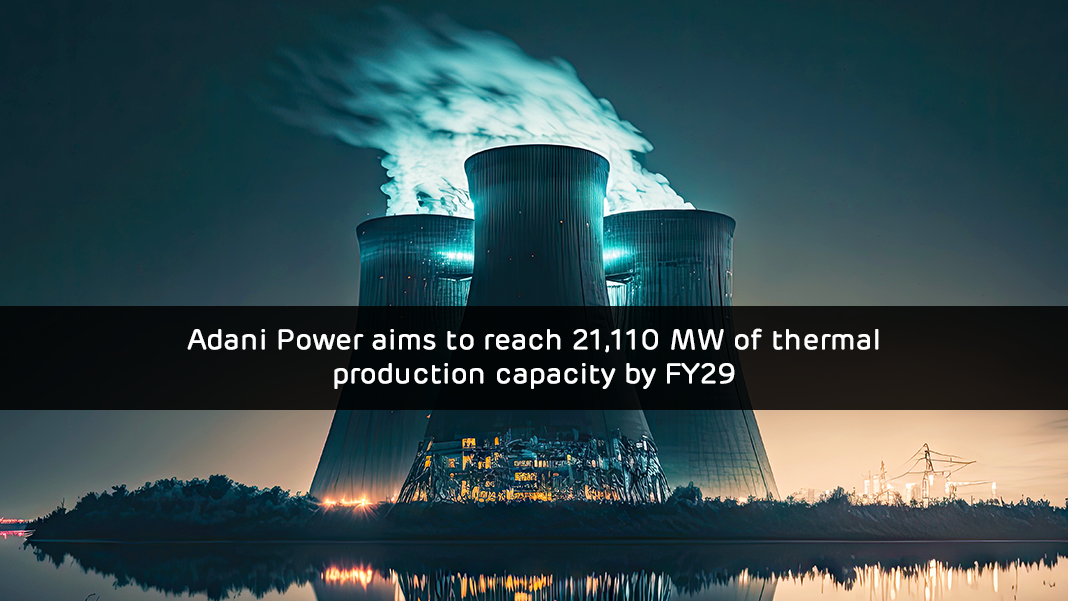By the end of the fiscal year 2029, Adani Power Ltd. hopes to have reached 21,110 MW of total thermal capacity. This includes a proposed 1,100 MW inorganic capacity and 3,200 MW of brownfield capacity, as per an investor presentation made on the public exchanges by the power producer of the Adani Group. This also includes the 1,600 MW of committed brownfield capacity and the 15,210 MW of current core capacity of the company.
In contrast to the benchmark Nifty 50’s 0.43% gain, Adani’s shares increased 6.65% to close at Rs 324.85 per share. Despite the ongoing Adani shares overleveraged controversy, Adani Power intends to reach a 21,110 MW thermal generation capacity by FY29. For more than ₹9,000 crores, US-based boutique investment firm GQG Partners and other investors purchased 31.2 crore shares, or 8.1% of Adani Power.
Adani Power’s maximum domestic fuel needs are covered by long- and medium-term FSAs
According to Adani Power, most of its domestic fuel needs are covered by long- and medium-term FSAs, which ensures high availability under PPAs. Eighty-one per cent of the capacity is locked into long-term PPAs, most of which provide strong revenue visibility and cash flow stability through fuel cost pass-through or tariff escalation. It stated that FSAs account for 79% of the country’s fuel capacity and have strategic synergies with the sibling company’s leadership in the logistics industry.
Contrary to the controversy surrounding the Adani shares overleveraged, the Adani group firm stated that contracts involving acceptable fuel cost recovery account for 74% of its capacity. It further noted that most merchant and open accommodation is situated near mine pitheads, offering a cost advantage in transportation. Adani Power added that, compared to Rs. 24,350 crores in FY23, net senior debt is expected to be Rs. 26,690 crores in FY24.
Significant senior debt payoff has shown the deleveraging of the balance sheet, according to Adani Power.
The shares have increased 44% in July 2023 due to several favourable developments
The shares have surged 44% on several positive events, albeit the Adani shares overleveraged controversy. From their 52-week low of ₹132.4, the shares have increased by 162.38%. The shares are interestingly trading at a nine-month high. The company outlined its ambitious ambition to reach a thermal generation capacity of 21,110 MW by FY29, comprising brownfield projects and inorganic routes, in an investor presentation made public to stock exchanges.
The corporation stated that it is dedicated to 1,600 MW of brownfield projects and has suggested adding 3,200 MW to 1,100 MW via an inorganic path. According to the company’s regulatory filing, it has eight power plants in Gujarat, Maharashtra, Karnataka, Rajasthan, Chhattisgarh, Madhya Pradesh, and Jharkhand, with an installed thermal generating capacity of 15,250 MW, in addition to a 40 MW solar power plant in Gujarat.
According to media sources, on August 16, US-based boutique investment firm GQG Partners and other investors purchased 31.2 crore shares, or an 8.1% interest, in Adani Power for more than ₹9,000 crores in a block sale. Adani Power’s stock has increased due to this calculated acquisition, and the other group stocks have also increased.
Despite the allegations, the company continued to be on the profitable side
Regarding financials, the company reported an 83.24% YoY surge in its consolidated net profit to ₹8,759 crores in Q1FY24. The company’s total quarterly income surged to ₹18,109 crores from ₹15,509 crores in the year-ago quarter. Despite the ongoing Adani shares overleveraged controversy, the company achieved an average plant load factor (PLF) of 60.1% in Q1FY24, showcasing an improvement from Q1FY23 of 58.6%.
Meanwhile, the business declared in the middle of July that power from the Group’s Ultra Super-Critical Thermal Power Plant in Godda, India, would now be supplied to Bangladesh. The Godda USCTPP (Ultra Super-Critical Thermal Power Plant) is the first international power project in India to be put into service, and it represents the Adani Group’s foray into transnational power projects. All of the electricity produced by this project is supplied to another country in full.
Conclusion
Despite the allegations surrounding the Adani shares overleveraged, Adani Power still has a 15,210 MW capacity. The company has a competitive edge in fuel logistics costs because of its strategically placed open capacity close to important coal production locations.


















